The Royal Australian Air Force set to take delivery of new EA-18G ‘Growler’ attack jets
OUR air force is about to make a big leap forward with advanced new fighter jets that will make Australia’s military ties to the US closer than ever.
IN future if there is a coup in Fiji or violence in Papua New Guinea and Australians have to be urgently evacuated or if there is a full-scale war it is a safe bet that one of the first military assets into the fray will be the RAAF’s new EA-18G “Growler” electronic attack jets.
From low risk missions such as knocking out mobile phone networks in downtown Suva to high-end war fighting and “killing” enemy missile or air defence radars — using a modern-day take on science fiction’s “death ray” — the Growler is the platform for the job.
On the allied side of the fence only the United States Navy and the RAAF will have the advanced electronic warfare capability, but it comes at a very high price.
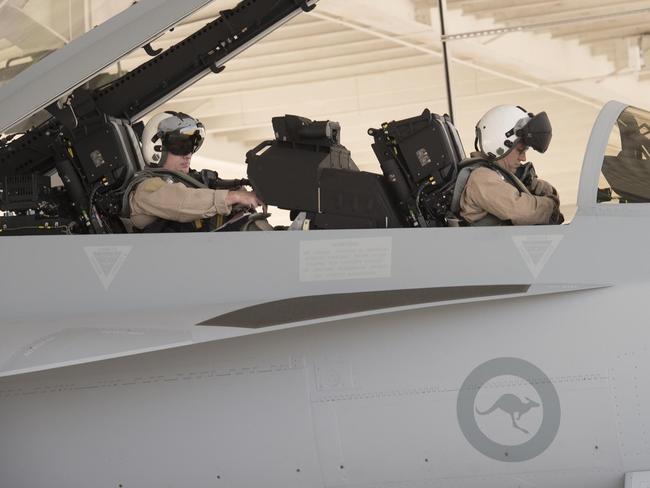
The Royal Australian Air Force is set to become one of the best equipped air forces on earth with the introduction of a dozen of the most powerful electronic attack aircraft yet built alongside a fleet of eight of the most hi-tech maritime patrol jets on the market today.
This dramatic upgrade comes ahead of the biggest capability surge of all when $12 billion worth of stealth F-35 Joint Strike Fighters arrive early next decade.
The 12 Boeing built “Growler” Super Hornet electronic attack jets will cost about $3.7 billion (through life) or $300 million each while eight Boeing P-8 Poseidon maritime patrol aircraft come with the hefty price tag of about $4 billion or $500 million each.
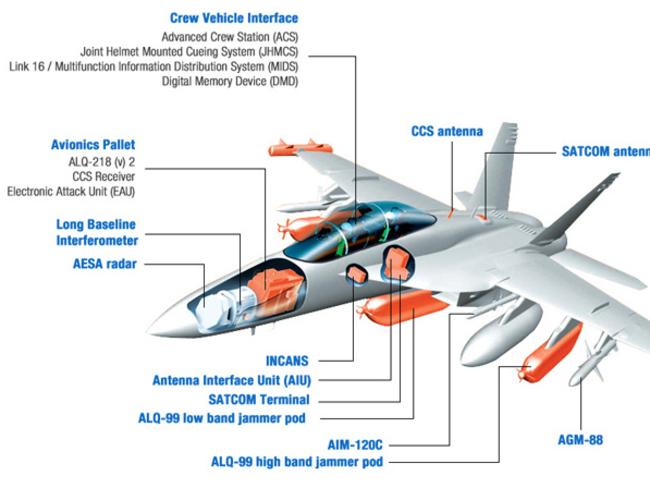
The government will almost certainly pick up the option for another four and possibly even another eight of the anti-submarine and surveillance planes to replace the retiring fleet of Adelaide based P3 Orion maritime patrol planes. This is on top of probably an extra four of the European-built KC-30A multi role tanker transport planes built by Airbus.
The P-8 is based on a militarised Boeing 737-900 airliner, but apart from their outward appearance and some key components the planes have very little in common. It comes with a strengthened fuselage for high G force operations, a bomb bay to launch torpedoes, weapons stations on the wings for Harpoon missiles and it can be refuelled in flight.
News Corp Australia travelled to the United States this week to take a close look at the sharp end of the RAAF’s biggest capability upgrade in its 100-year history, starting at US Navy’s P-8 production line at Boeing’s Seattle facility and then on to St Louis for the roll out ceremony for the first of the RAAF’s “Growler” jets.
Little is published about the true capability of the “Growler” and many of its functions are classified top-secret. The RAAF says it can “disrupt, deceive or deny” a broad range of military electronic systems.
“The capability will reduce the risk to our forces and improve their situational awareness,” says the RAAF website.
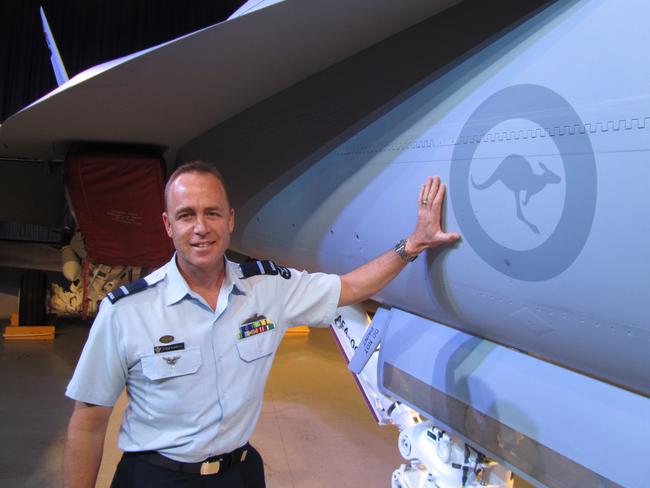
The jets will carry numerous jamming systems both internally and in external pods as well as missiles designed to inflict maximum damage on an enemy’s radar and communications systems.
More than 150 Growler jets will be in service with the US Navy with most based at Whidbey Island Naval Air Station near Seattle as well as a squadron on-board the carrier USS George Washington that recently operated in Australian waters during the Australia-US Talisman Sabre
war games.
As newly retired RAAF boss Air Marshal Geoff Brown said at the rollout ceremony for the first Australian jet at the Boeing plant in St Louis on Wednesday, “(Growler) will have the biggest strategic effect on the ADF since the F-111 in the 1970s.”
That is a big call, but there is no doubt that an electronic attack capability fits neatly with the RAAF’s $20 billion plus modernisation program that will see virtually every platform replaced during the next decade.
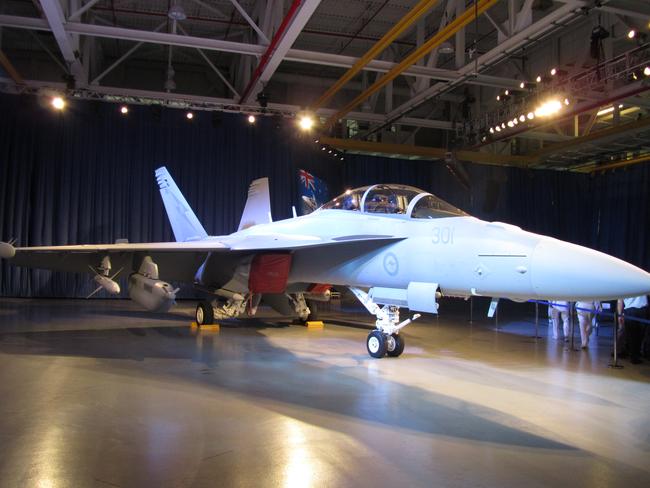
Growler is a rare bird and it is only due to Australia’s extremely close military relationship with the US that we are getting the capability at all.
Only the US Navy and Marines and the RAAF will have Growler.
US Navy Rear Admiral Donald Gaddis summed up the relationship pretty well when he said the RAAF was starting to look a lot like the US Navy.
With Growler, Super Hornet, P-8 Maritime patrol aircraft and Triton unmanned surveillance jets all coming down the pipeline he has a point.
Air Marshal Brown, who regards the Growler as a vital cog in his push under Plan Jericho to transform the RAAF into an integrated, networked force able to operate across the air power spectrum, took the alliance issue a step further when he said Australia always tried to be “seamlessly interoperable” with both the US Navy and US Air Force.
“As the US Navy updates this aircraft we will stay in lock step.
“We also look like the US Air Force in many respects,” he said.
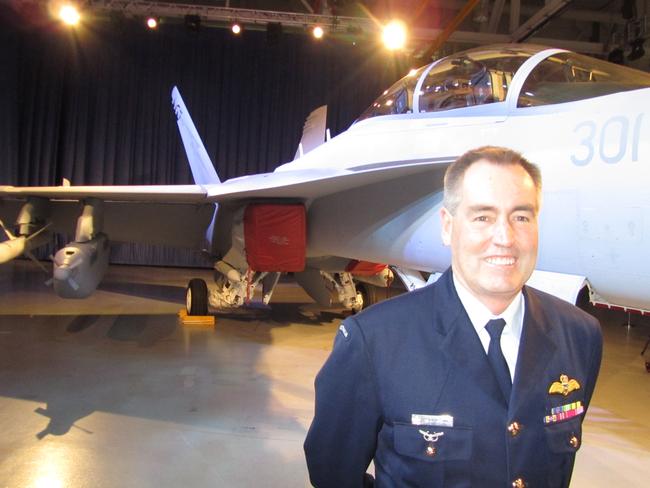
Air Marshal Brown, who goes by the unusual nickname of “Dog Biscuit”, did not see any risks in such a cosy relationship because it provided Australia with unique access to the best military technology in the world.
The RAAF was initially going to buy just 24 Super Hornets and convert 12 of those into “Growlers”, but in 2013 the then Labor Government decided to buy 12 extra Growlers and keep the 24 in strike roles.
With a fleet that is virtually identical to the US Navy’s it is reasonable to assume that the two sides will be training and operating together on a more regular basis in the future.
Australian pilots and support personnel are in the US learning to operate the Growler, the P-8 and soon the Triton and six pilots are deployed to operations US Navy squadrons.
The Growlers are due in operational RAAF service in 2018.

Meanwhile over at Boeing’s Seattle plant the firm’s director of business development for the P-8 program James Detwiler, said the new plane is superior to the P-3 Orion in every respect. The 737 jet flies 30 per cent faster, almost twice as high and can remain on station (up to nine hours or 22 with in-flight refuelling) for longer than its turbo-prop predecessor. It is 50 per cent cheaper to run and carries nine crew compared with 11 on a P-3 and it is optimised for anti-submarine warfare, which is a skill that has declined rapidly in the RAAF during the past decade.
The P-8 caries 126 sonobuoys for tracking submarines and they are fired by compressed air rather than explosives on the P-3.
“In most cases the P-8 is optimised better than the P-3,” Mr Detwiler said.
The first RAAF P-8 will be flying by mid-2016 and will be fully in service by 2021 at RAAF Base Edinburgh near Adelaide. Australian crews are already in training in the US learning how to be instructors.
“This is 21st century technology in the 21st century,” Mr Detwiler said.
So far orders for the plane amount to 117 for the US Navy eight for Australia and eight for India with another 100 possible according to Boeing.
The RAAF has been a development partner and that means it has a seat at the table when it comes to shaping future capability updates.
The planes are due in service in 2018.
Ian McPhedran travelled to the US courtesy of Boeing.



